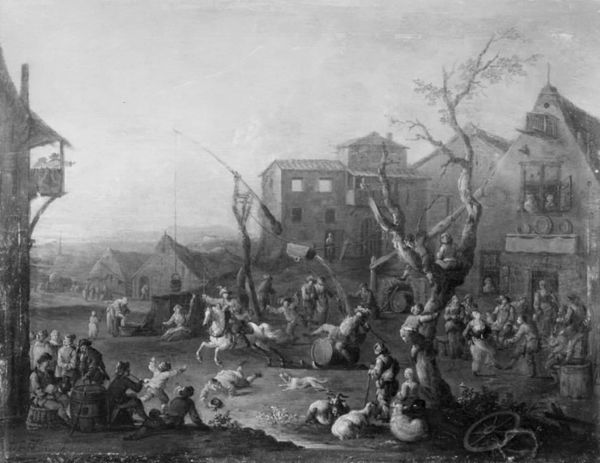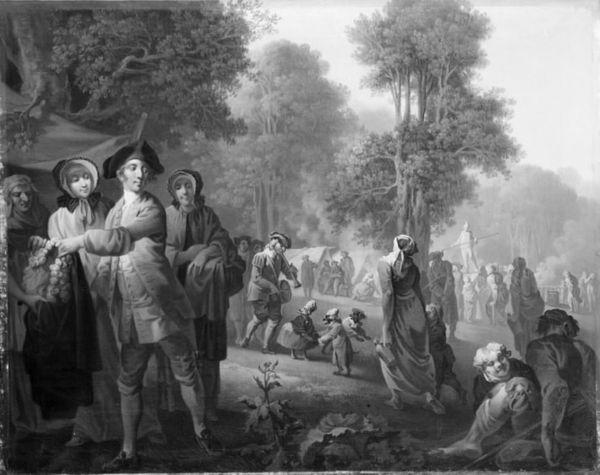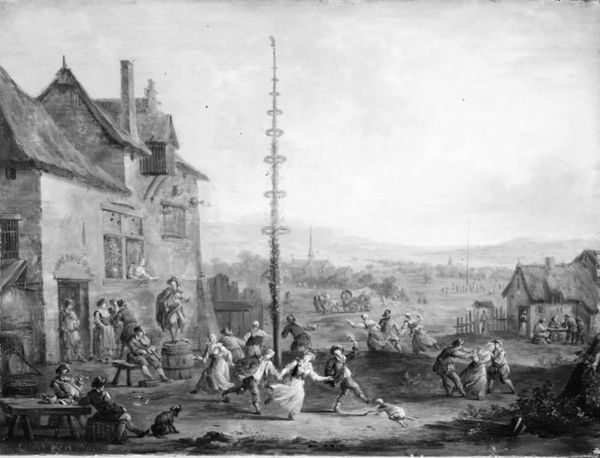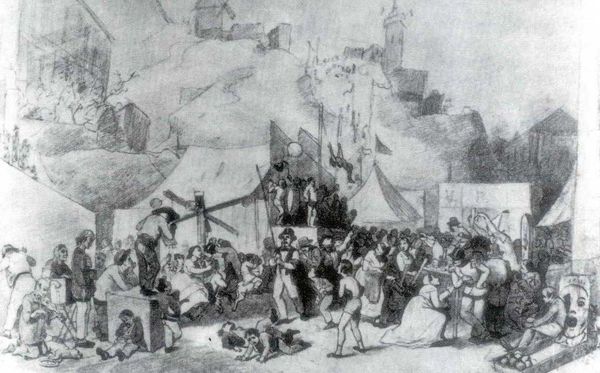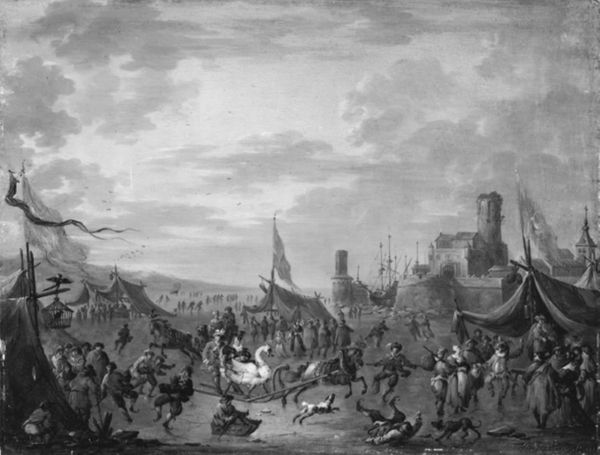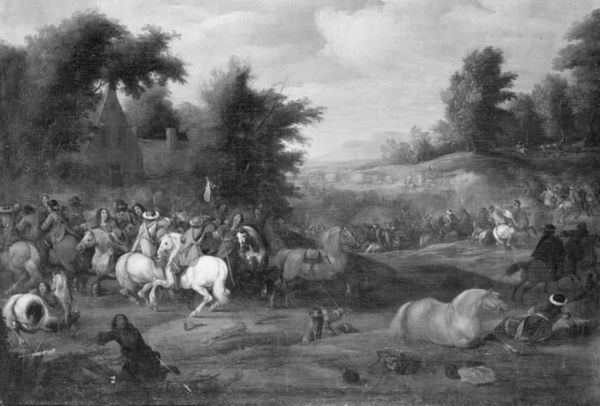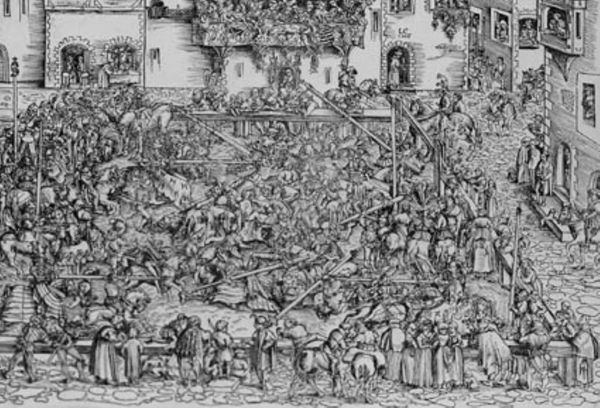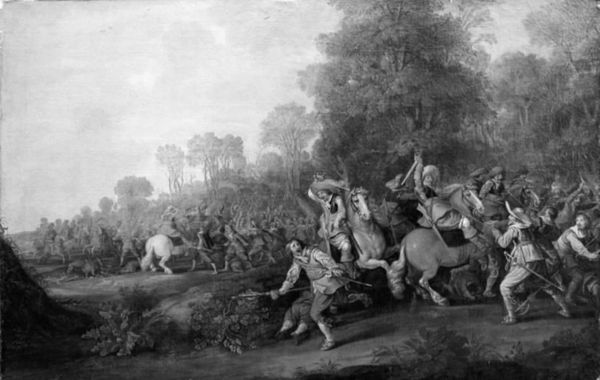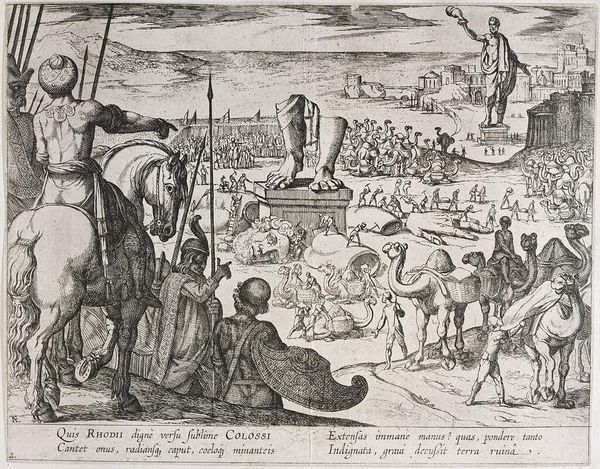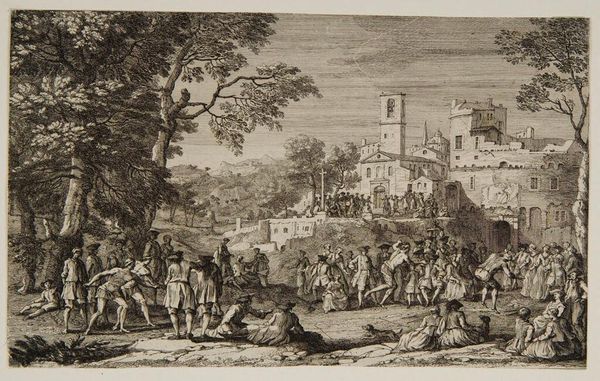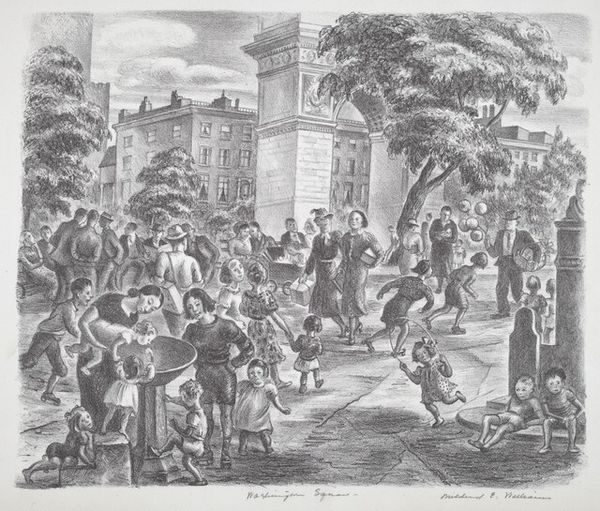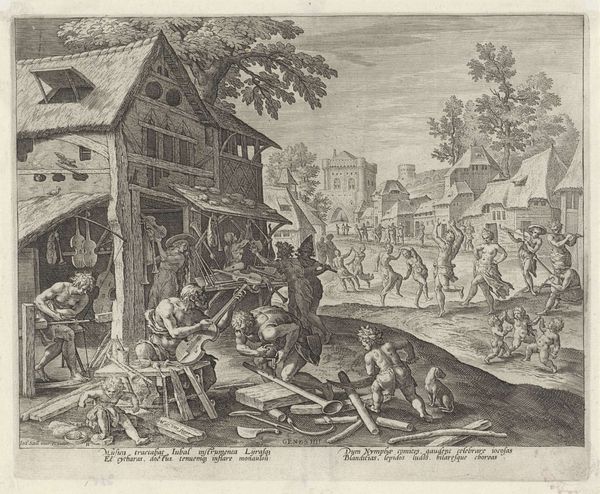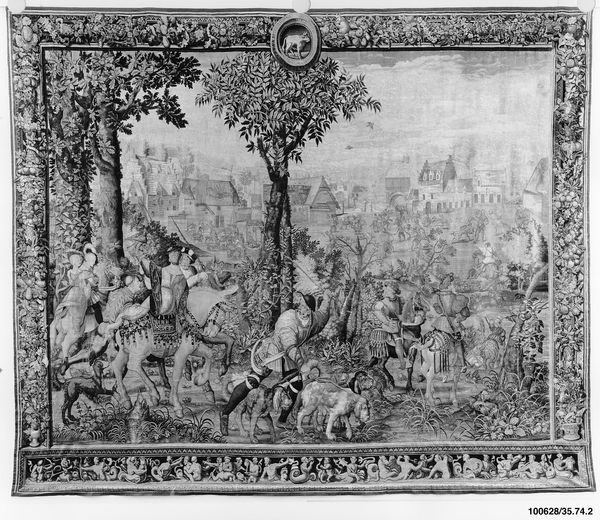
painting, oil-paint
#
dutch-golden-age
#
painting
#
oil-paint
#
landscape
#
figuration
#
black and white
#
genre-painting
#
realism
#
monochrome
Dimensions: 115 cm (height) x 136 cm (width) (Netto)
Editor: Here we have Joost Cornelisz Droochsloot's "Rustic Feast," dating sometime between 1599 and 1666, created with oil paint. It gives off a sense of organized chaos with so many figures interacting within the scene, almost like a snapshot of everyday life in a village. What strikes you most about this piece? Curator: This genre painting offers a valuable glimpse into the social fabric of the Dutch Golden Age, doesn't it? Look closer— what do you notice about the distribution of people, who seems to be included and who's perhaps at the margins? Editor: I see a mix. There seems to be a central group enjoying themselves with music and dance, but others are just watching, perhaps excluded from the festivities. Curator: Exactly. Droochsloot’s detailed scenes, seemingly neutral, were often loaded with commentary. Consider the socio-economic disparities of the time. How might the feast itself reflect or obscure the everyday hardships faced by many? Is this celebratory scene an accurate reflection of daily life for everyone, or a constructed ideal? Editor: That's a good point. The scene is lively, but maybe it downplays the struggles of the less fortunate or conveniently ignores class tensions by idealizing rustic life? It makes me wonder about the audience for such paintings and their perspectives. Curator: Precisely. These paintings provide a window into how the Dutch Golden Age constructed its own image, negotiating realities of wealth and poverty. Considering his activist voice, can art act as social commentary or even activism when representing a particular group? Editor: I never considered how a genre scene like this could be used for political undertones. Thank you! Curator: Absolutely! Exploring such works through an intersectional lens unveils their complex relationships to power, identity, and social change.
Comments
No comments
Be the first to comment and join the conversation on the ultimate creative platform.
